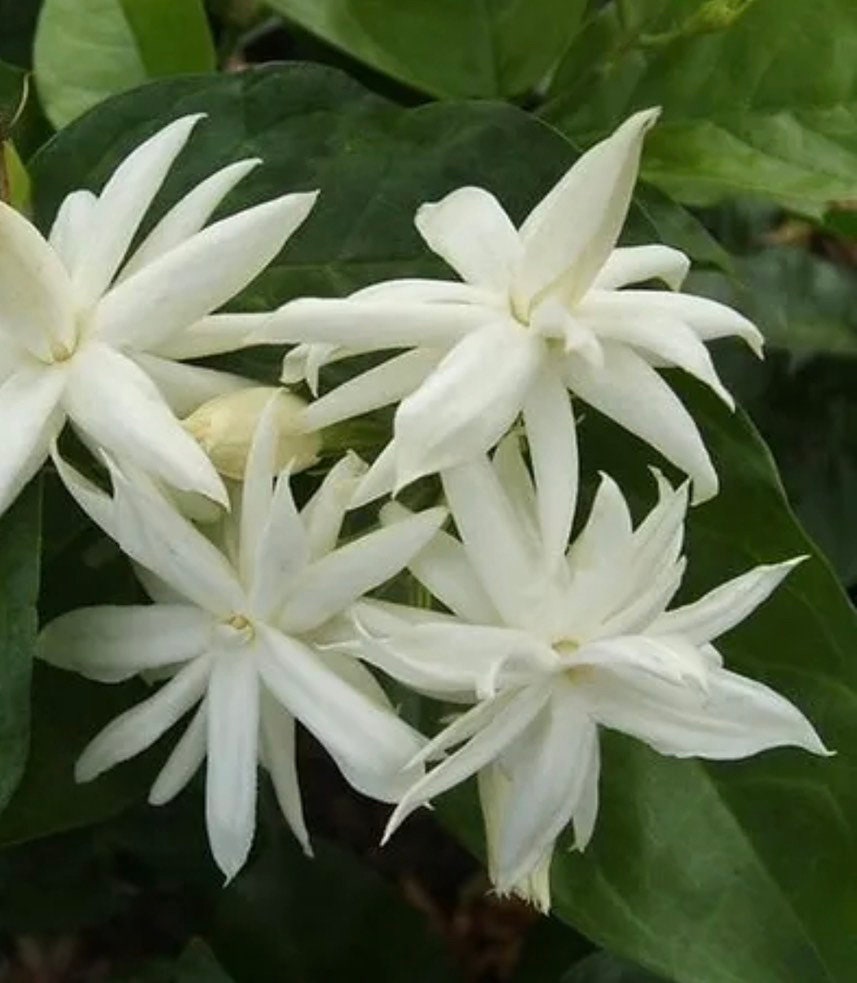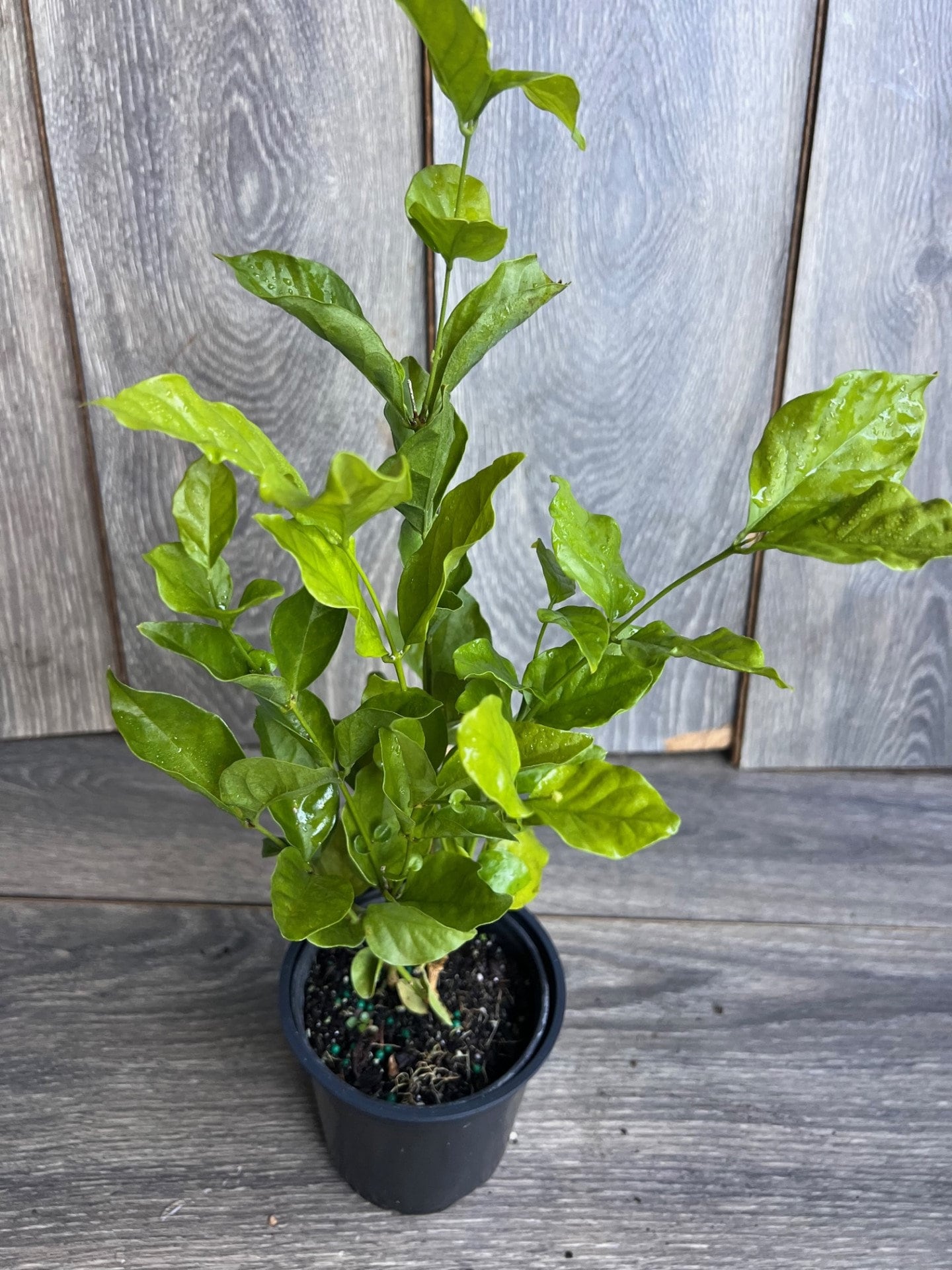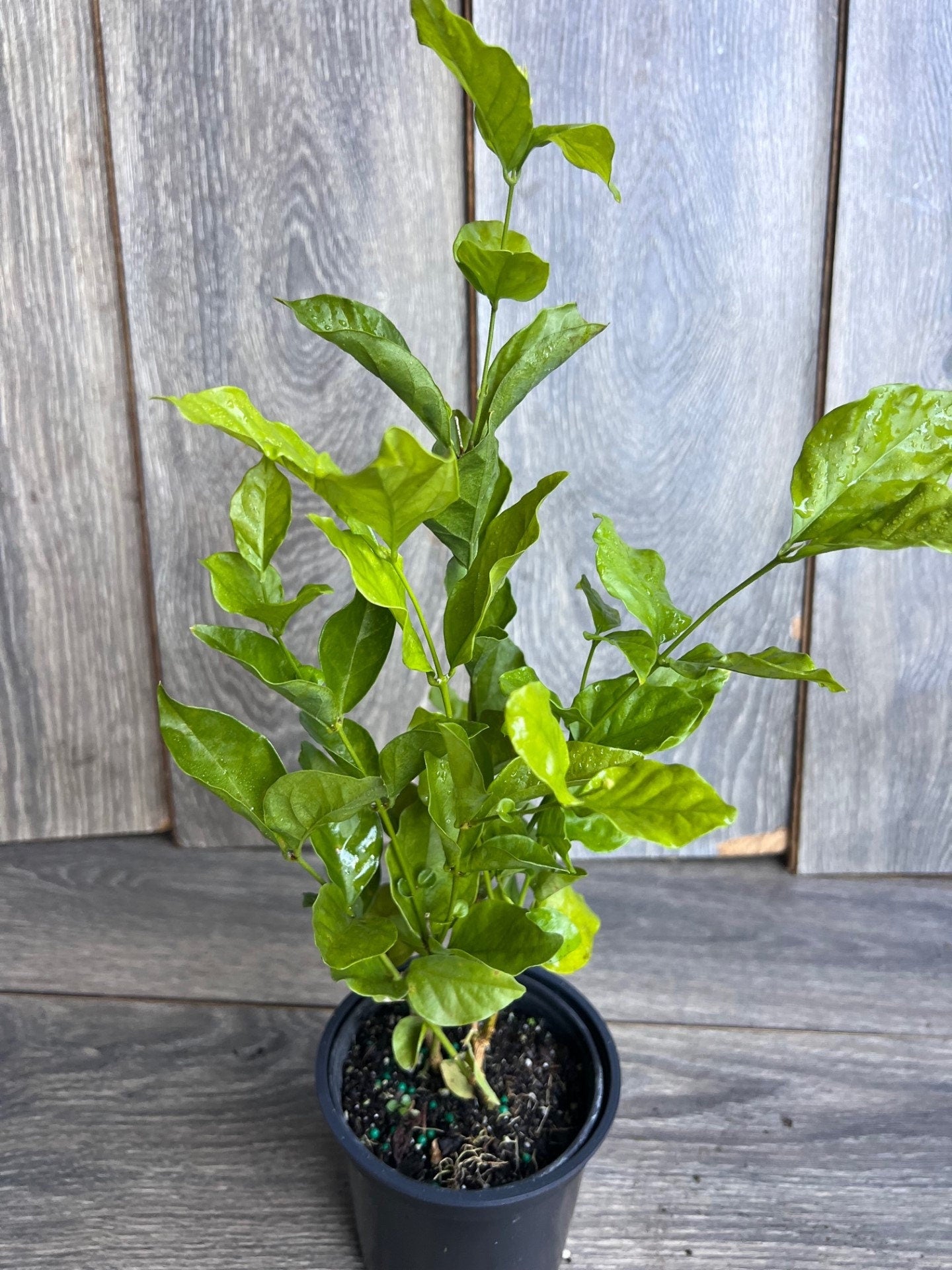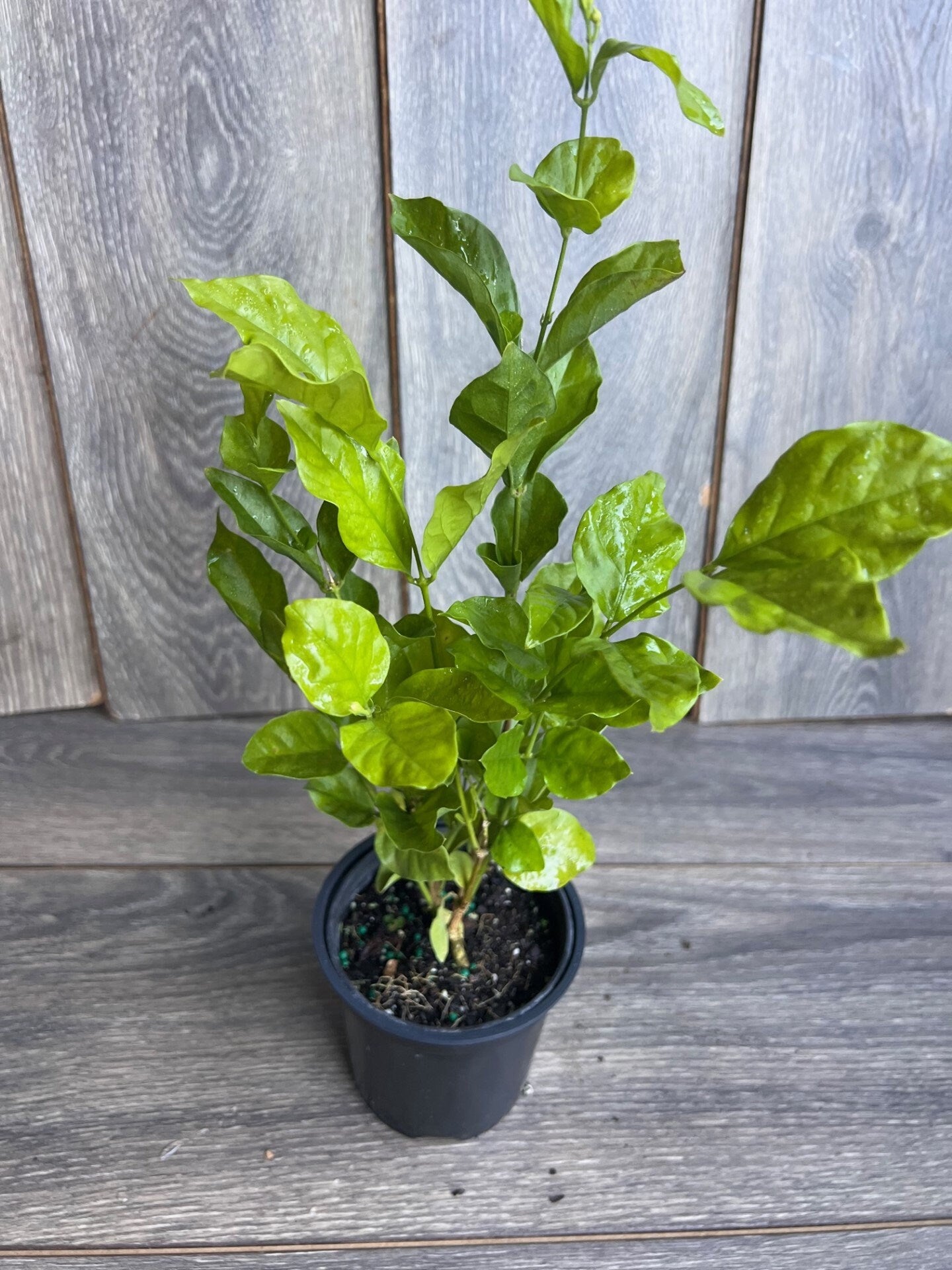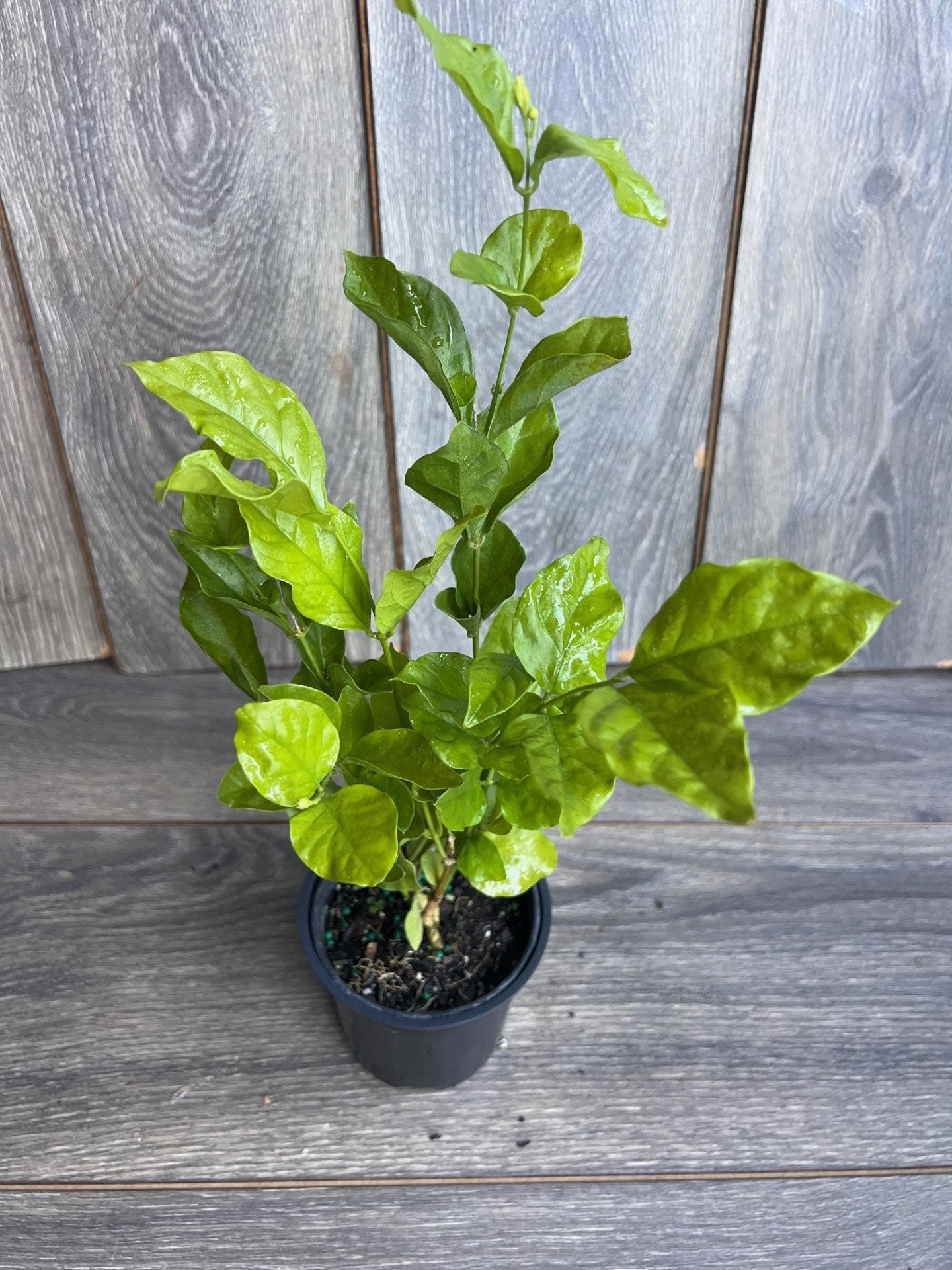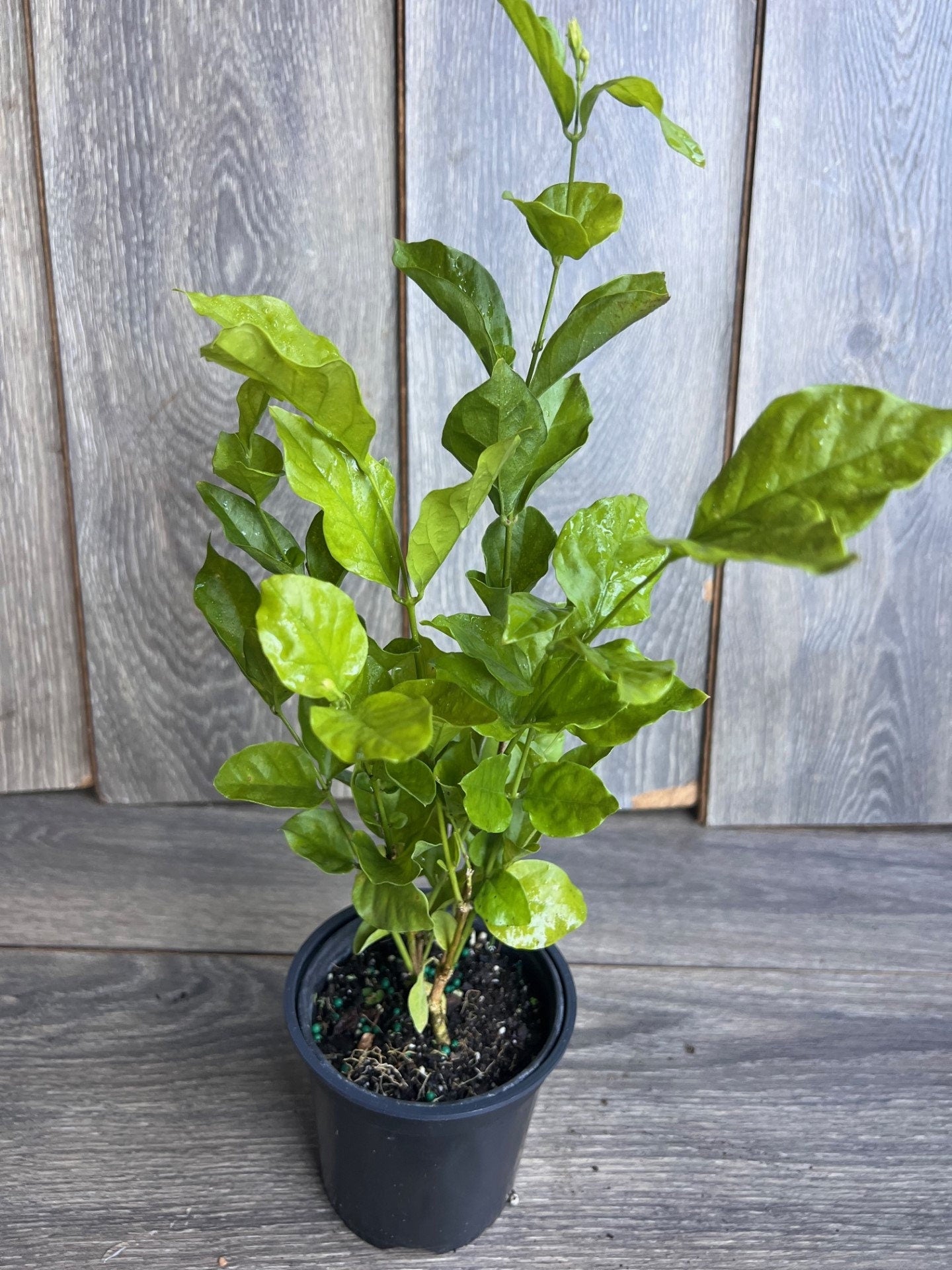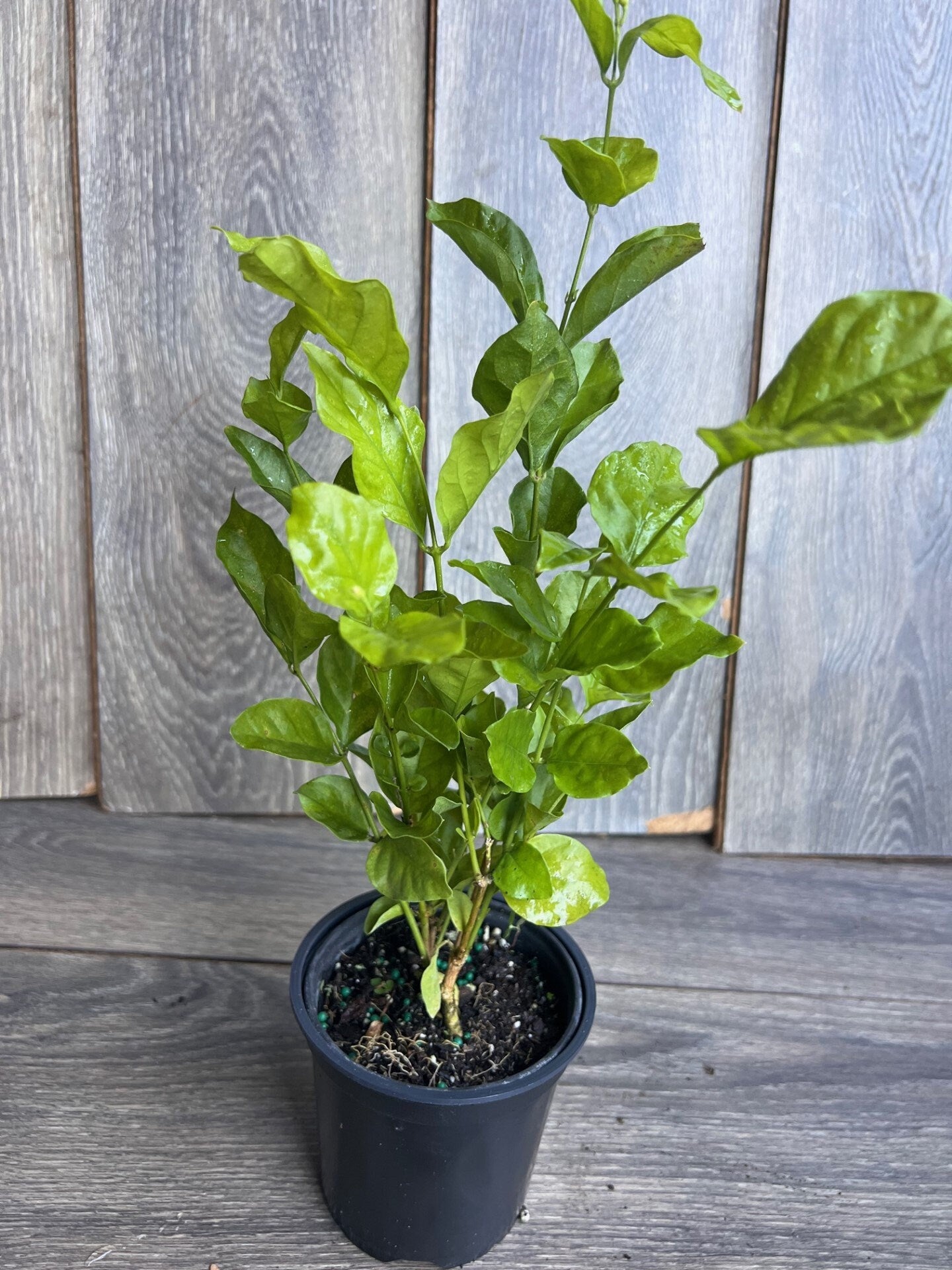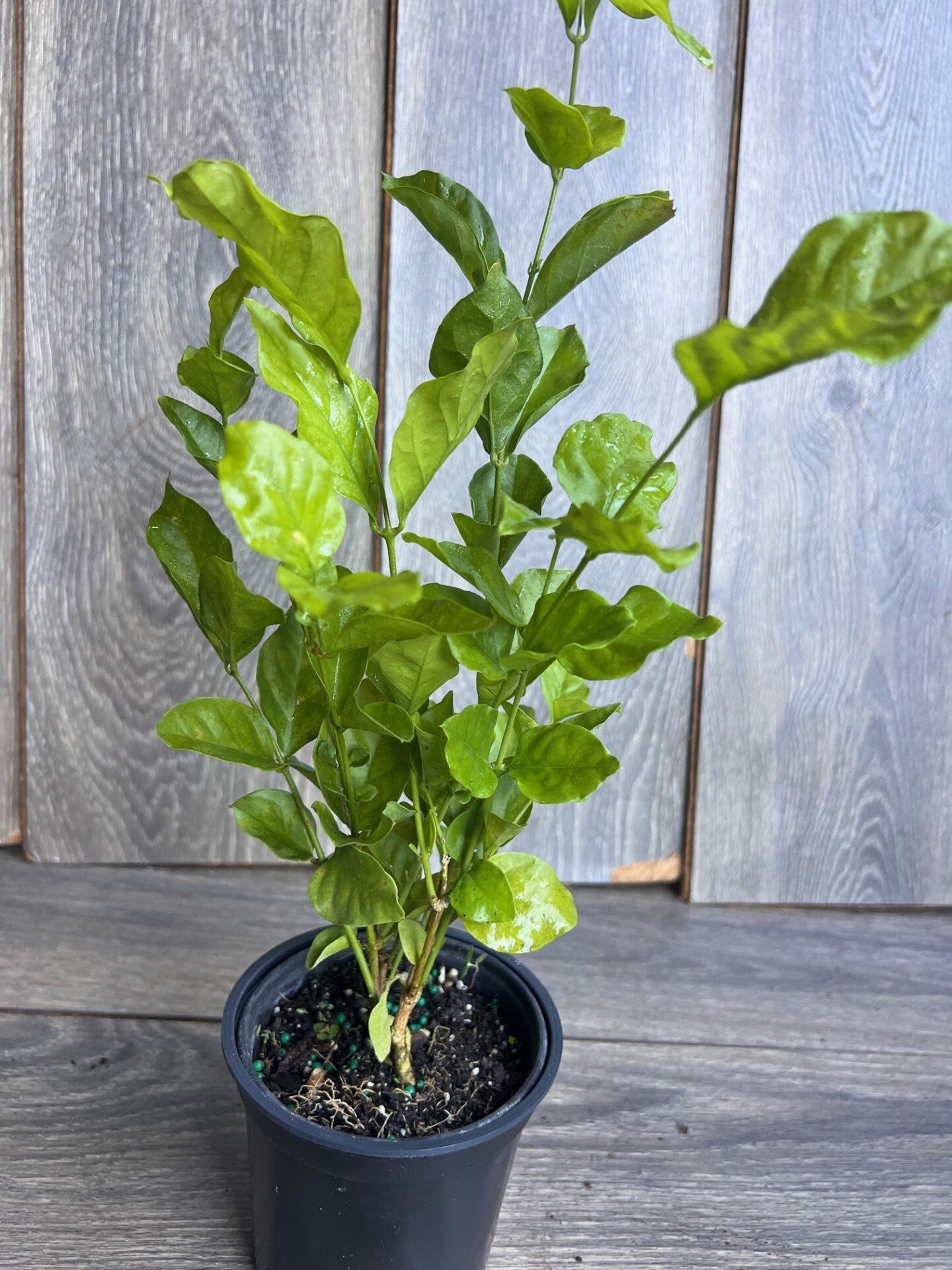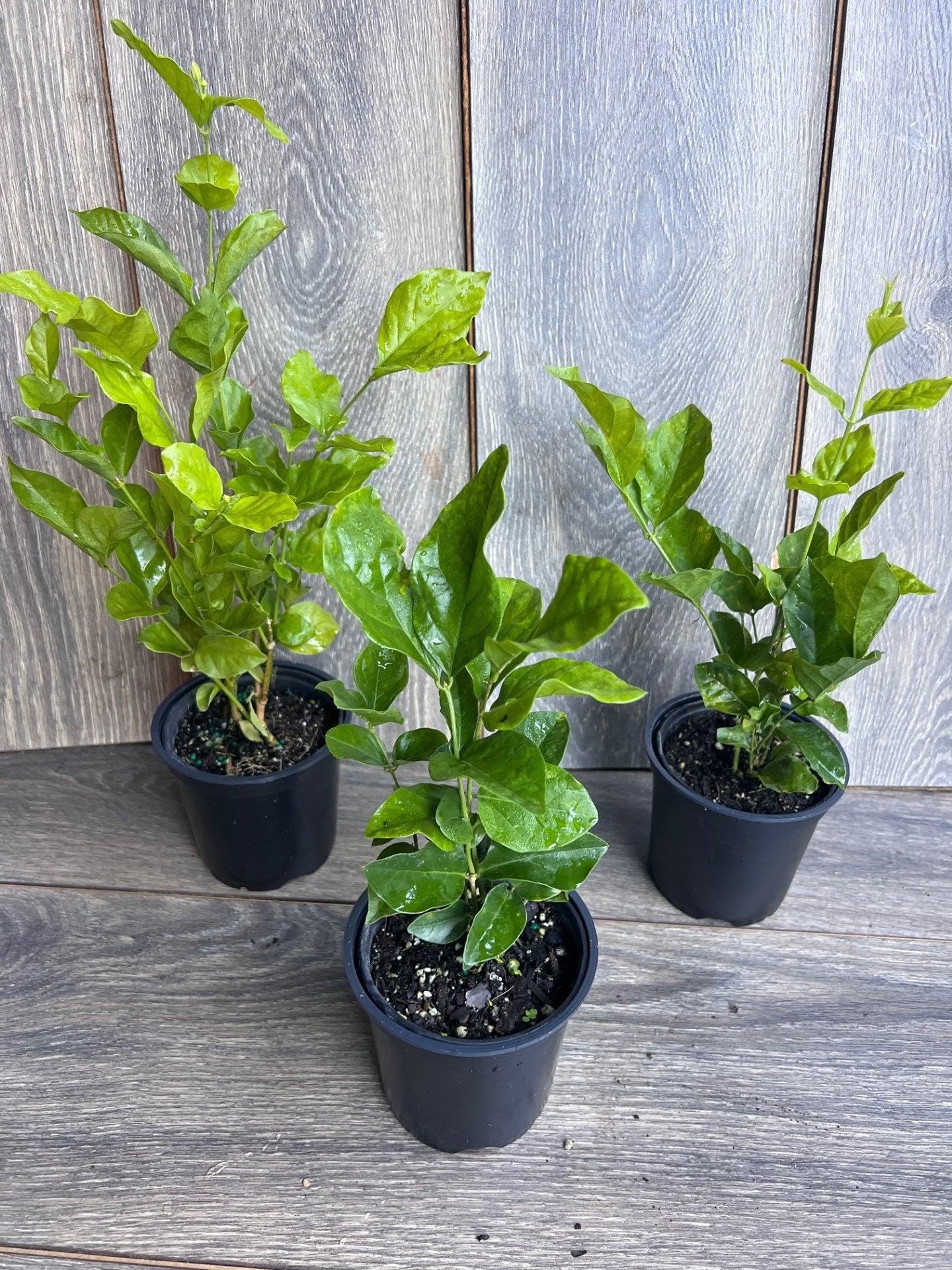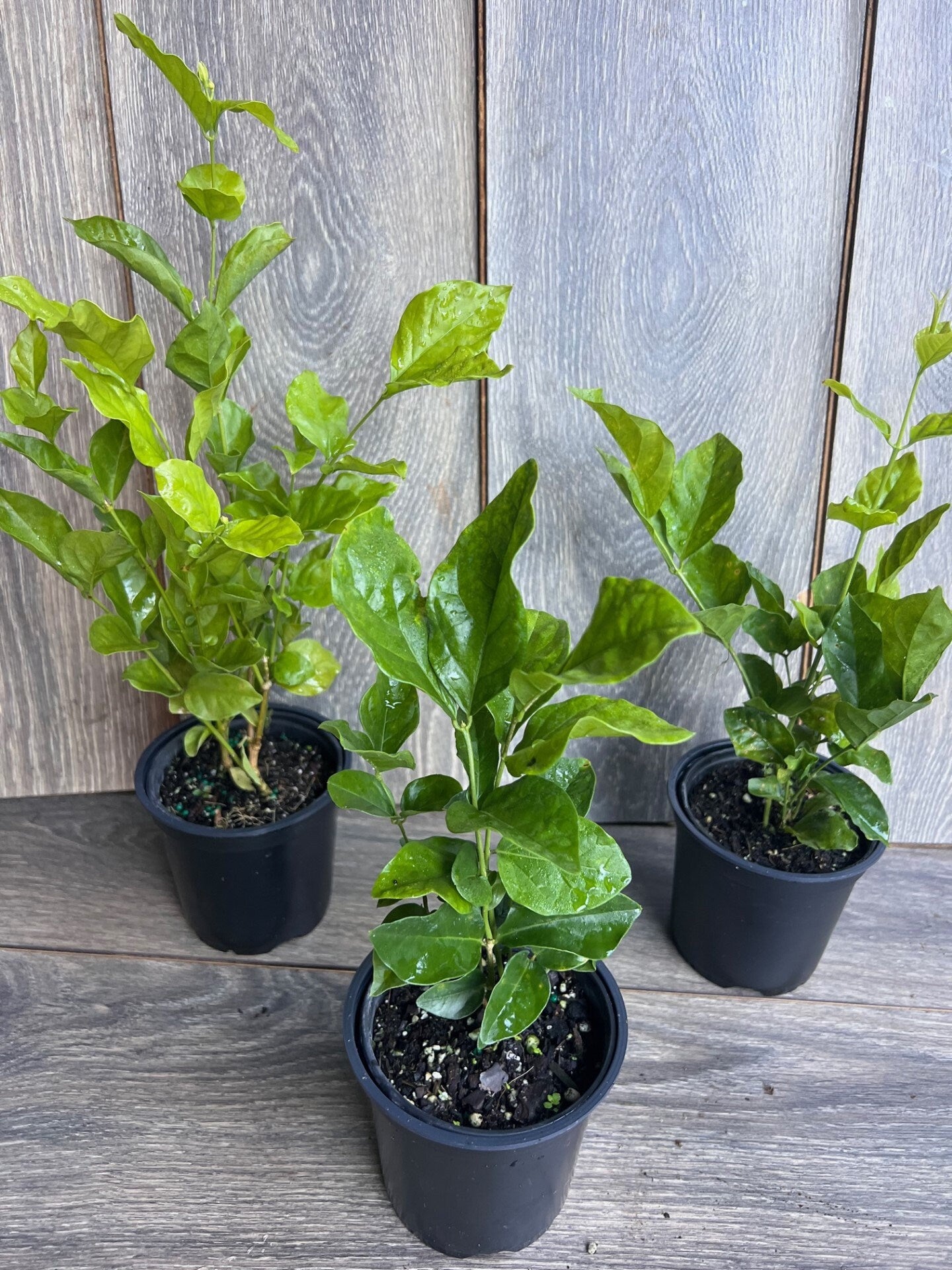1
/
of
10
Jasmine Belle of India in 4" Pot Pot, Fragrance, Flowers and Brilliant Green Leaves
Jasmine Belle of India in 4" Pot Pot, Fragrance, Flowers and Brilliant Green Leaves
Regular price
$22.38 USD
Regular price
$29.84 USD
Sale price
$22.38 USD
Unit price
/
per
Shipping calculated at checkout.
Couldn't load pickup availability
Note: You will receive 1 Jasmine Belle of India in 4" Pot similar to the pictures
Jasmine Belle of India is a fragrant, flowering jasmine variety known for its vibrant white to pale yellow flowers that bloom in large clusters. Native to India, this jasmine is prized for its sweet, strong fragrance, often used in perfumery and traditional garlands. It grows as a shrub or vine and can reach heights of 10-15 feet (3-4.5 meters). Jasmine Belle of India thrives in warm, tropical or subtropical climates, preferring full sun or partial shade and well-draining soil. It is a popular choice for gardens and landscapes due to its beauty and aromatic flowers, especially in the evening when the fragrance is at its peak.
Care Tips for Jasmine Belle of India:
1. Light Requirements
- Full Sun to Partial Shade: Thrives in full sun (6-8 hours of direct sunlight per day). In hotter climates, some afternoon shade may be beneficial to protect from intense midday sun.
- Indoor Care: Place near a south- or west-facing window to ensure ample sunlight. Supplement with a grow light if natural light is insufficient.
2. Watering
- Consistent Moisture: Keep the soil consistently moist but not waterlogged. Water when the top inch of soil feels dry, especially during the growing season (spring through fall).
- Avoid Overwatering: Ensure good drainage to prevent water accumulation around the roots, which can cause root rot. Water deeply, allowing the soil to dry slightly between waterings.
- Watering Frequency: In winter, reduce watering as the plant's growth slows down.
3. Soil Requirements
- Well-Draining, Loamy Soil: Prefers fertile, loamy soil that retains moisture but drains well. Use a well-draining potting mix if growing in a container.
- Slightly Acidic to Neutral pH: Ideal soil pH is between 6.0 and 7.5 (slightly acidic to neutral).
- Improving Drainage: Amend heavy or clay-like soil with organic matter such as compost or coarse sand to improve drainage.
4. Temperature and Humidity
- Warm Temperatures: Best in temperatures between 65°F to 85°F (18°C to 29°C). Protect from frost as it is not frost-tolerant.
- Humidity: Prefers moderate to high humidity. In dry indoor environments, increase humidity by misting leaves, using a humidifier, or placing a shallow water tray near the plant.
5. Fertilizing
- Feed During Growing Season: In spring and summer, feed every 4-6 weeks with a balanced, water-soluble fertilizer high in phosphorus to encourage flowering.
- Organic Fertilizers: Compost or fish emulsion can be used for slow-release nutrients.
- Reduce Fertilizing in Winter: As growth slows in the cooler months, reduce or stop fertilizing.
6. Pruning and Maintenance
- Light Pruning: After blooming, prune to remove dead or damaged growth, maintain shape, and encourage fresh growth. This prevents leggy growth and keeps the plant compact.
- Encourage Bushy Growth: Pinch back tips to promote branching and denser growth. Remove spent flowers to prevent energy expenditure on fruit production.
- Vine Support: Provide a trellis, arbor, or other support to help the vine grow upward and improve airflow around the plant.
7. Pests and Diseases
- Common Pests: Look out for aphids, mealybugs, scale insects, and spider mites. Treat infestations with neem oil or insecticidal soap. Prune affected areas if necessary.
- Fungal Diseases: Prevent fungal issues like powdery mildew by ensuring good air circulation and avoiding overhead watering.
8. Flowering
- Fragrant White to Pale Yellow Flowers: Known for its aromatic flowers that bloom in clusters. The fragrance is most intense in the evening, attracting pollinators like bees and moths.
- Encourage Blooms: Ensure sufficient sunlight, proper watering, and regular feeding. Deadhead spent flowers to promote continuous blooming and maintain plant health.
9. Repotting (For Container-Grown Plants)
- Repot Every 1-2 Years: Repot when the plant becomes root-bound, choosing a container 1-2 inches larger than the current one.
- Fresh Soil: Use fresh, well-draining potting mix when repotting to encourage healthy root development. Water well after repotting.
10. Toxicity
- Non-Toxic to Pets: Jasmine Belle of India is safe for households with cats and dogs, making it a pet-friendly addition to your garden or home.
Share
